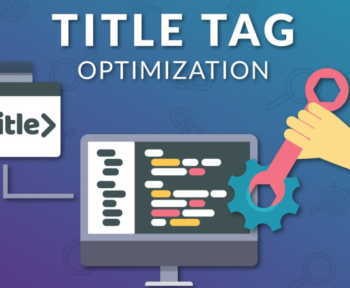Table of Contents
What is Customer Lifetime Value (CLV)?
Customer Lifetime Value (CLV) is defined as the value a customer has due to past purchases made for a brand or organization, in other words, the net profit associated with the customer over time. Indicates Its lifetime value. Basically, it is the value a company receives from its customers during their relationship.
Market research relies heavily on data. In this age of technology, many market researchers prefer to track everything like emails, social media, website visits, and payments made. There are some tools that can help you measure the total customer journey from start to finish by estimating the value of each touchpoint with the customer’s business.
Customer lifetime value is an important measure that helps companies make important decisions about various aspects of their market, such as total cost and their actual profit to the customer, sales, marketing, and product development. And customer service and support. For example:
Marketing: How much money do you spend to earn new customers?
Product: What changes are best for a product that meets the needs of customers?
Customer Support: How Much Money Does it Take to Get Talented Customer Support Staff to Provide Immaculate Customer Service?
Sales: What kind of customer should sales staff spend the most time on?
Customer lifetime value is an important metric for measuring and evaluating the performance of your campaigns. It is a long-term indicator of good business “health” and really helps to gain customer loyalty.
Customer lifetime value is calculated based on purchases made by customers in the past and the expectations they make in the future.
What is the formula to calculate Customer Lifetime Value?
It is calculated based on the historical value of the customer lifetime and the estimated value of the customer lifetime. The historical method examines past data and fully confirms the customer’s value based on past transactions. In contrast, the predictive method, as its name implies, assesses the value of customers in relation to the purchases they make in the future. In the next section, we will learn more about customer lifetime value principles.
Historical customer lifetime value
Historical Customer Lifetime Value is the gross profit of all purchases made by an individual customer. The total transaction value of total gross profit. If you have access to all past transactions made by your customers, you can calculate the historical customer lifetime value as follows:
Customer lifetime value (historical) = (transaction 1 + transaction 2 + transaction 3 … + transaction N) x AGM
Where:
N = Last transaction made by the customer in your store
AGM = average gross margin
Calculating a customer’s lifetime value based on net profit provides the company with the value of the actual earnings that the customer brings to a business.
There is one disadvantage in calculating the lifetime value of a historical customer: it becomes very difficult to calculate individually.
The estimated lifetime value of the customer
It is a more accurate value, which is estimated by the algorithm based on the purchases made by the customer, i.e., the total value that the customer pays to the company for the rest of his life.
In practice, this can be a bit difficult to achieve considering the fact that there may be a price increase or some kind of reduction, etc. There are many ways to calculate the estimated lifetime value of a customer and these methods vary widely. With complexity and precision.
General Assessment Customer lifetime value can be calculated using the formula:
CLV= ((Tx AOV) AGM) ALT
Where:
T = average monthly transactions
AOV = average order value
ALT = Average Customer Lifetime
AGM = average gross margin
This equation becomes the gross margin contribution per customer lifetime (GML). Therefore,
CLV= GML (R / 1 + D – R)
Where:
R = monthly retention rate
D = monthly discount rate
*This model is a predictive model and may not be an accurate reference.
Companies need to perform these calculations in real-time to understand how valuable a customer is to a business or brand.
The importance of customer lifetime value
As we have said, customer lifetime value is one of the most important metrics for any company or brand. The customer churn is bad for any business. This is a well-known fact, we know that gaining new customers is more expensive than retaining existing ones. Therefore, in order to improve the customer retention strategy, a business must calculate the lifetime value of the customer.
Customer value is important and here are five factors that contribute to profitability, retention, and business success:
Estimate ROI in real-time: Customer lifetime value helps the company or business focus on the channels that provide the most revenue through the most profitable customers. Optimize your marketing channels so that customers understand their total assets rather than their first purchase.
Helps to improve marketing retention strategy: The amount of money you put into your marketing campaign does not count towards the instant income you generate. For example, a marketing campaign should not only focus on turning your one-time buyers into repeat customers, it should also add value.
Create an effective message for the target audience: The business or organization must know how to divide its customers based on customer lifetime value to improve the relevance of the marketing strategy to retain customers and reduce confusion. A practical way to do this is to divide the market and create products that best fit their needs, which sends an effective message to your customers and encourages them to make new purchases. Will be back again.
Helps to understand user behavior: By sorting out the data obtained by studying the customer’s lifetime value, companies can maintain a playbook of features that will help them understand what led to the first purchase. Once this analysis is complete and the results are out, similar triggers can be used to interact with potential customers or customers for the first time.
Improved customer service results: When customers feel valued, they come back to the brand and buy another. To achieve this, the brand must provide exceptional customer service. Customers who think positively about the brand are undoubtedly customers who shop more than once. Consider that customers who see you positively will also recommend you to their friends and family. Do you want to know his opinion? Take the survey with the question of Net Promoter Score.
Customer lifetime value determines how much money you can spend on your business over its lifetime. This is a useful formula that will help you to formulate a strategy to retain your customers and win new customers.
Other Reads:
What is a Conversion Rate (CVR) & How To Calculate a Conversion Rate?
What is Gross Rating Point (GRP) & How to calculate it?
Customer Acquisition Cost (CAC)- Formula & Calculation





